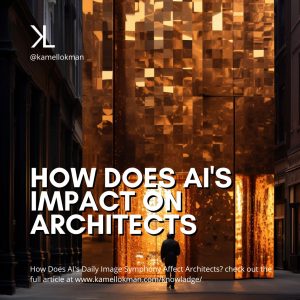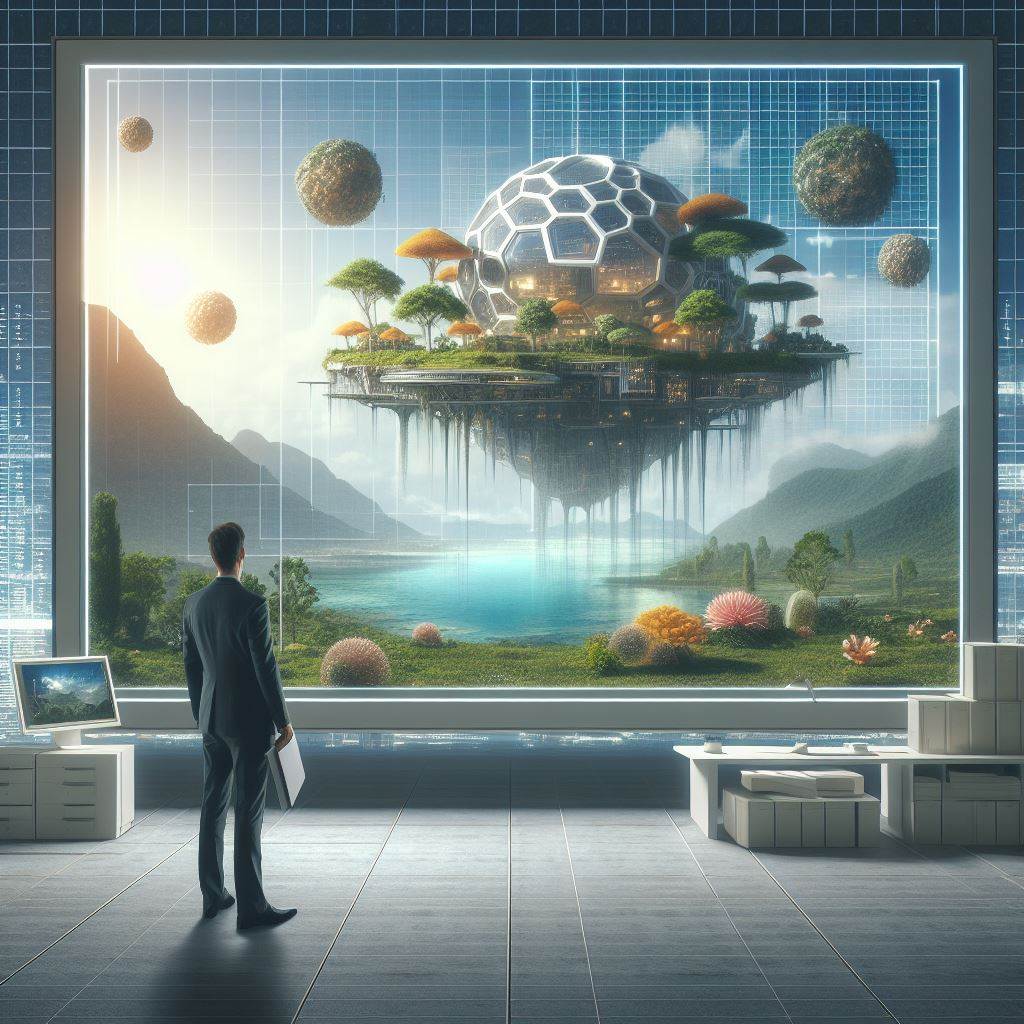[et_pb_section fb_built=”1″ admin_label=”Header” _builder_version=”4.16″ custom_padding=”4px||0px|||” global_colors_info=”{}”][et_pb_row column_structure=”3_5,2_5″ _builder_version=”4.16″ global_colors_info=”{}”][et_pb_column type=”3_5″ _builder_version=”4.16″ z_index=”10″ global_colors_info=”{}”][et_pb_text _builder_version=”4.22.2″ header_2_font=”Montserrat|900|on||||||” header_2_font_size=”60px” custom_margin=”||||false|false” header_2_font_size_tablet=”56px” header_2_font_size_phone=”32px” header_2_font_size_last_edited=”on|desktop” locked=”off” global_colors_info=”{}”]
What Positive and Negative Impacts Does AI’s Daily Symphony of Millions of Images Have on Architects and Designers?
[/et_pb_text][et_pb_text _builder_version=”4.16″ text_font=”Montserrat||||||||” text_font_size=”16px” text_line_height=”1.8em” text_font_size_tablet=”15px” text_font_size_phone=”14px” text_font_size_last_edited=”on|desktop” global_colors_info=”{}”]
In the world of artificial intelligence, the pace of advancement is nothing short of astounding. With each passing day, AI systems grow more capable, more sophisticated, and more integral to our daily lives. One fascinating aspect of this AI revolution is its voracious appetite for data, especially images. In recent years, we have witnessed an explosion in the use of AI to process and generate images, resulting in an astonishing daily output of millions of images. This immense volume has given rise to a metaphorical “noise” within the AI landscape, as the machines tirelessly churn out a symphony of visual data. However, the impact of this symphony on architects and designers is a complex and multifaceted one, with both positive and negative aspects.
The AI Image Generation Craze
The roots of this phenomenon lie in the field of generative adversarial networks (GANs). GANs are a class of machine learning models that have gained widespread attention for their ability to create highly realistic images. The GAN framework consists of two neural networks: a generator and a discriminator. The generator generates images, while the discriminator evaluates them for realism. Through a competitive process, the generator continually improves its ability to create images that are indistinguishable from real ones.
This breakthrough in AI technology has given rise to a multitude of applications, from creating realistic artwork and deepfakes to aiding in medical imaging and enhancing video game graphics. However, the success of GANs has also led to a colossal increase in the number of images generated on a daily basis.
AI’s Daily Image Output
The AI community, along with tech giants and startups, has harnessed the power of GANs and other image generation techniques. These systems are integrated into various applications, including social media platforms, e-commerce websites, and even creative art projects. As a result, they produce a staggering number of images every day, far beyond what any human could create.
[/et_pb_text][et_pb_social_media_follow icon_color=”#000000″ icon_color_tablet=”” icon_color_phone=”#ffffff” icon_color_last_edited=”on|phone” _builder_version=”4.16″ scroll_vertical_motion_enable=”on” scroll_vertical_motion=”0|50|50|100|0.5|0|-0.5″ locked=”off” global_colors_info=”{}”][et_pb_social_media_follow_network social_network=”facebook” _builder_version=”4.16″ background_color=”rgba(0,0,0,0)” background_enable_color=”on” global_colors_info=”{}” follow_button=”off” url_new_window=”on”]facebook[/et_pb_social_media_follow_network][et_pb_social_media_follow_network social_network=”twitter” _builder_version=”4.16″ background_enable_color=”off” global_colors_info=”{}” follow_button=”off” url_new_window=”on”]twitter[/et_pb_social_media_follow_network][et_pb_social_media_follow_network social_network=”linkedin” _builder_version=”4.16″ background_color=”#007bb6″ background_enable_color=”off” global_colors_info=”{}” follow_button=”off” url_new_window=”on”]linkedin[/et_pb_social_media_follow_network][et_pb_social_media_follow_network social_network=”instagram” _builder_version=”4.16″ background_color=”#ea2c59″ background_enable_color=”off” global_colors_info=”{}” follow_button=”off” url_new_window=”on”]instagram[/et_pb_social_media_follow_network][/et_pb_social_media_follow][/et_pb_column][et_pb_column type=”2_5″ _builder_version=”4.16″ global_colors_info=”{}”][et_pb_image src=”https://old-site.kamellokman.com/wp-content/uploads/2023/10/ks0282_an_art_gallery_with_a_modern_facade_in_the_style_of_shim_1f6a1448-3d45-40f6-bfef-469131dbb7d7.png” title_text=”ks0282_an_art_gallery_with_a_modern_facade_in_the_style_of_shim_1f6a1448-3d45-40f6-bfef-469131dbb7d7″ _builder_version=”4.22.2″ _module_preset=”default” global_colors_info=”{}”][/et_pb_image][/et_pb_column][/et_pb_row][/et_pb_section][et_pb_section fb_built=”1″ admin_label=”Features” _builder_version=”4.16″ custom_padding=”1px||0px|||” global_colors_info=”{}”][et_pb_row column_structure=”3_5,2_5″ _builder_version=”4.16″ custom_padding=”26px|||||” global_colors_info=”{}”][et_pb_column type=”3_5″ _builder_version=”4.16″ global_colors_info=”{}”][et_pb_image src=”https://old-site.kamellokman.com/wp-content/uploads/2023/10/ks0282_the_mall_is_surrounded_by_buildings_covered_in_copper_ti_fc88b410-bc3c-41b1-938f-6b2b019ad793.png” title_text=”ks0282_the_mall_is_surrounded_by_buildings_covered_in_copper_ti_fc88b410-bc3c-41b1-938f-6b2b019ad793″ _builder_version=”4.22.2″ _module_preset=”default” custom_padding=”0px|||||” global_colors_info=”{}”][/et_pb_image][et_pb_text _builder_version=”4.16″ text_font=”Montserrat||||||||” text_font_size=”16px” text_line_height=”1.8em” custom_padding=”||0px|||” text_font_size_tablet=”15px” text_font_size_phone=”14px” text_font_size_last_edited=”on|desktop” global_colors_info=”{}”]
1. Social Media:
On platforms like Instagram, Facebook, and Twitter, AI-driven algorithms automatically generate images for advertisements, filters, and user recommendations. Millions of users upload pictures daily, but the platforms themselves also churn out an enormous number of images for user engagement.
2. E-commerce:
Product images, personalized shopping recommendations, and augmented reality try-ons have become commonplace on e-commerce websites. AI generates these images to enhance the shopping experience, leading to an influx of millions of product visuals every day.
3. Content Creation:
AI-driven content creation tools assist writers, designers, and marketers in generating visuals for articles, blog posts, and marketing campaigns. These tools produce a vast array of images to complement written content.
4. Entertainment:
In the entertainment industry, from video games to movies, AI-generated graphics and animations contribute significantly to visual storytelling. The demand for realistic, high-quality graphics in these fields results in the daily production of a multitude of images.
The Positive Influence on Architects and Designers
Architects and designers are among those who stand to benefit from the AI-driven image generation phenomenon in various ways:
1. Enhanced Creativity:
AI tools can inspire architects and designers by generating a vast array of design ideas, helping them explore unconventional possibilities and push creative boundaries.
2. Rapid Prototyping:
AI can expedite the design process by creating detailed 3D models and visualizations, enabling architects to present their ideas to clients more effectively.
3. Accessibility to Resources:
AI can assist in curating vast libraries of design references, making it easier for architects and designers to access a wealth of inspiration and knowledge.
4. Cost Efficiency:
AI-driven design tools can help optimize projects by reducing material waste, energy consumption, and other resources, contributing to sustainable design practices.
The Negative Influence on Architects and Designers
While AI offers numerous advantages to architects and designers, there are potential downsides to consider:
1. Homogenization of Design:
The ease of access to AI-generated designs could lead to a sameness in architectural and design aesthetics, reducing the uniqueness of each project.
2. Threat to Employment:
As AI becomes more proficient in design tasks, there is a concern that it may replace certain roles in architecture and design, potentially leading to job displacement.
3. Ethical Considerations:
The use of AI in design also raises ethical questions, particularly regarding the ownership of AI-generated designs and the potential for plagiarism or copyright disputes.
The daily symphony of millions of images created by AI has a profound impact on architects and designers. While it presents opportunities for enhanced creativity, rapid prototyping, and cost efficiency, it also introduces challenges related to design homogenization, potential job displacement, and ethical concerns. Architects and designers must navigate this evolving landscape with care, harnessing the power of AI while preserving the unique human touch that defines their professions. As AI continues to evolve, it will play an increasingly significant role in shaping the future of architecture and design, offering both benefits and complexities that must be carefully considered.
[/et_pb_text][/et_pb_column][et_pb_column type=”2_5″ _builder_version=”4.16″ global_colors_info=”{}”][et_pb_image src=”https://old-site.kamellokman.com/wp-content/uploads/2023/10/ks0282_the_mall_is_surrounded_by_buildings_covered_in_copper_ti_be1b8a2a-c50b-4b36-ab23-07881cbd4973.png” title_text=”ks0282_the_mall_is_surrounded_by_buildings_covered_in_copper_ti_be1b8a2a-c50b-4b36-ab23-07881cbd4973″ _builder_version=”4.22.2″ _module_preset=”default” global_colors_info=”{}”][/et_pb_image][et_pb_image src=”https://old-site.kamellokman.com/wp-content/uploads/2023/10/ks0282_gold_plated_buildings_on_a_city_street_in_the_style_of_w_d7c0e998-c960-4114-8f2e-8aca05518529.png” title_text=”ks0282_gold_plated_buildings_on_a_city_street_in_the_style_of_w_d7c0e998-c960-4114-8f2e-8aca05518529″ _builder_version=”4.22.2″ _module_preset=”default” custom_margin=”234px|||||” custom_padding=”277px|||||” global_colors_info=”{}”][/et_pb_image][/et_pb_column][/et_pb_row][/et_pb_section][et_pb_section fb_built=”1″ fullwidth=”on” _builder_version=”4.22.2″ _module_preset=”default” global_colors_info=”{}”][/et_pb_section]



